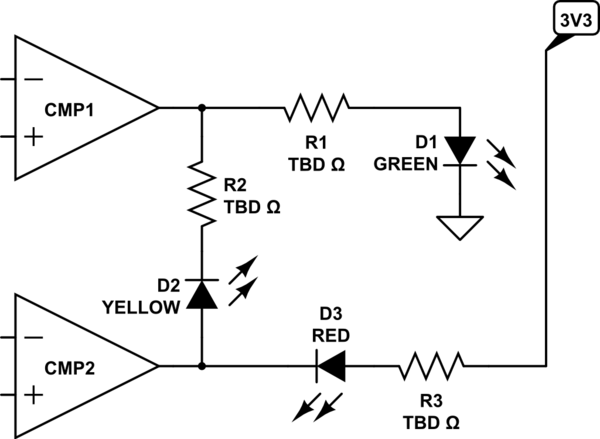I'm designing a small system that uses an ATMEGA328P and a LoRa module that runs on 3.3V using a AAA 1.5V battery. The battery is connected to a Boost Converter which steps up the 1.5V to 3.3V to power the entire system. So obviously the whole system needs to have a low power consumption to save battery power. I want to attach a push button in the circuit that displays the battery level when pressed through LEDs.
The LED indicators are as follows.
- Green LED - V_Bat > 1.4V
- Yellow LED - 0.9V < V_Bat < 1.4V
- Red LED - V_Bat < 0.9V
Here is the design of my circuit using the following components
- Voltage Regulator - TPS61221DCKT
- SCHOTTKY Diode - STPS1L30A
- Analog Comparator - TSX393IYDT
- XOR Logic Gates - 74AC86SC
- Green LED - KP-2012LSGC
- Orange LED - KPT-2012LVSECK-J4-PRV
- Red LED - KPT-2012LVSECK-J3-PRV

simulate this circuit – Schematic created using CircuitLab
Here are my questions.
- Will the circuit work?
- Will the components I picked out worked? (I picked components that are all low power)
- Are there any necessary resistors or passive components needed in the circuit to limit current anywhere?
- In my voltage divider, how high can I set the resistors to reduce power consumption before it starts giving problem?
- Any suggestions to improve the circuit?
Thanks for the help in advance and sorry for the many questions



